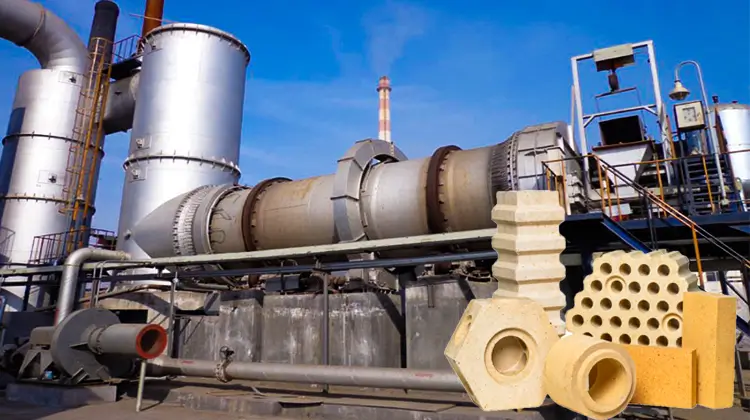What are the characteristics of incinerators and the applications of fire bricks in incinerators?
Incinerators are mainly used to deal with all kinds of wastes, which are converted into ashes, gases and heat energy through high temperature combustion. some fire bricks are usually required. In order to ensure the stable operation and long-term durability of incinerators at high temperatures.

1、Operating temperature range of incinerators
The operating temperature range of incinerators is usually between 850°C and 1200°C or even higher.
1. Medium-temperature incinerators: the working temperature is usually between 850°C and 1000°C.
2. High-temperature incinerators: operating temperatures between 1000°C and 1200°C
3. Ultra-high-temperature incinerators: some special incinerators operate at temperatures exceeding 1200°C.、
2、Types of incinerators and requirements:
1) Rotary Kiln: has a rotating cylindrical body and handles large quantities of waste. Its refractory bricks need to withstand constant mechanical shock and high temperatures.
2) Fluidized Bed Incinerator: In this type of furnace, the waste and fuel are “suspended” in a bed by a gas flow. This type of incinerator requires high thermal shock resistance of the refractory bricks, because of the high temperature and air flow variations in the furnace.
3) Fixed Grate Incinerator: This type of incinerator has a fixed bed on which the waste is gradually burned. Fire resistance bricks need to be adapted to the temperature and chemical environment of the fixed bed.
4) Gasification Furnace: This type of furnace is used to convert waste into a combustible gas. The refractory bricks for gasification furnaces need to be stable at higher temperatures and resistant to scouring from gas flow.
5) Pyrolysis Furnace: This type of furnace is used to pyrolyze wastes under oxygen deficient conditions to produce solid, liquid and gaseous by-products. fire resistance bricks need to be able to work stably at higher temperatures and resist chemical reactions during pyrolysis
3、Which fire bricks are used?
1) Furnace lining: high alumina bricks + corundum bricks
2) Combustion chamber: high alumina refractory bricks + magnesia refractory bricks
3) Furnace bottom: high alumina bricks + carbon refractory bricks
4) Flue and exhaust system: magnesium fire bricks + chrome refractory bricks
5) Cooling zone: high alumina bricks + lightweight bricks
6) Ash discharge system: high alumina bricks + carbon bricks
7) Furnace roof and door: high alumina fireproof bricks + corundum fire bricks
8) Heat insulation layer: lightweight fire bricks + refractory heat-insulating bricks
Different parts of the furnace have different requirements for refractory bricks. Factors such as temperature, chemical environment and mechanical stress need to be taken into account to ensure that the refractory bricks can be used to meet specific operational needs.
